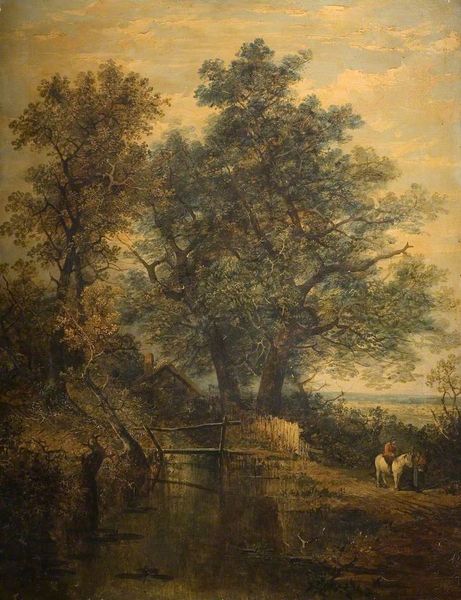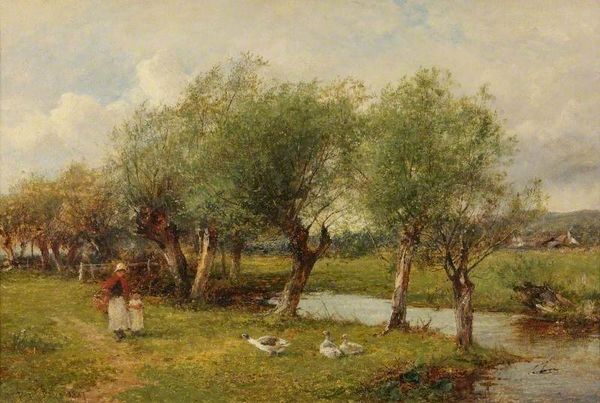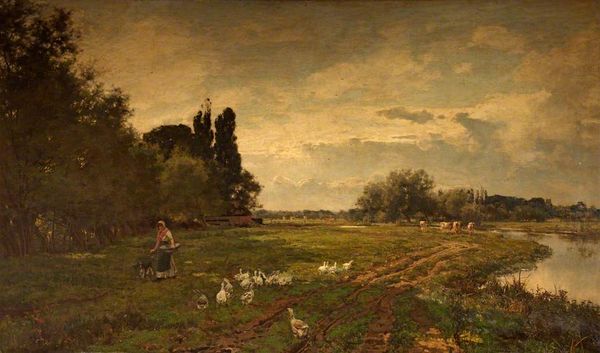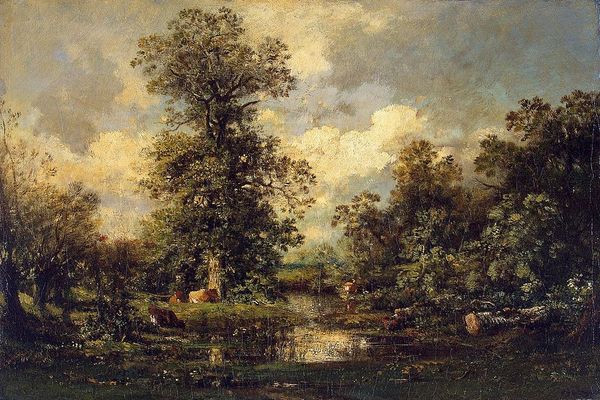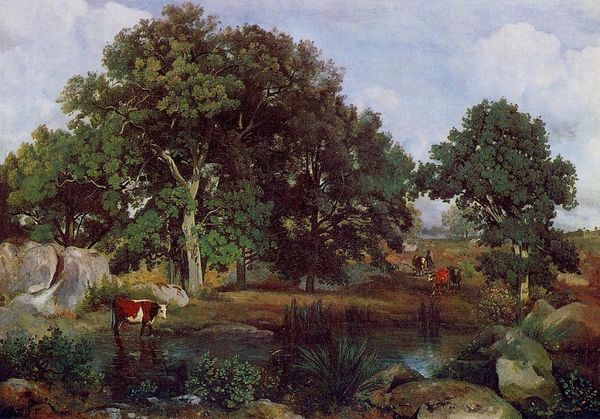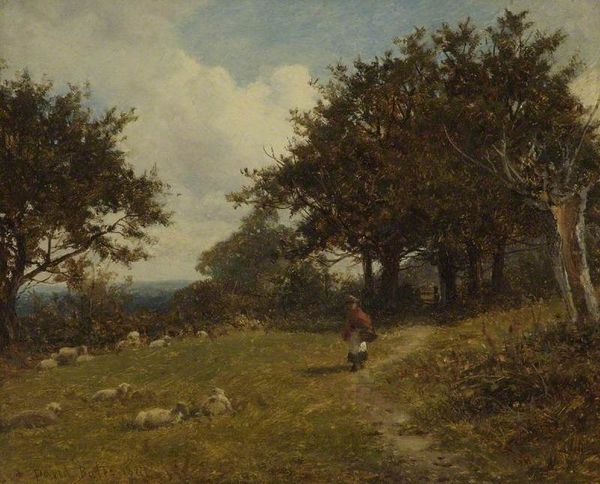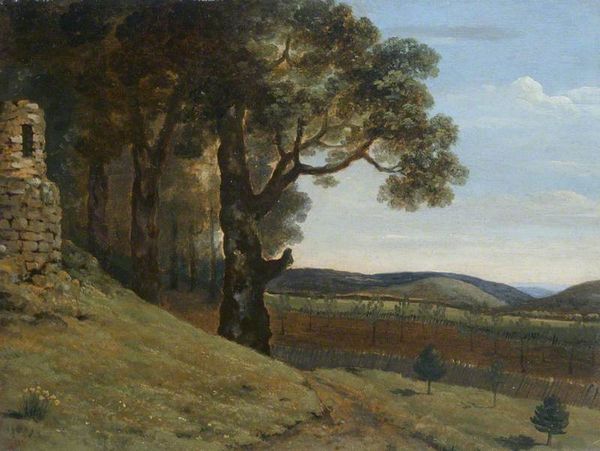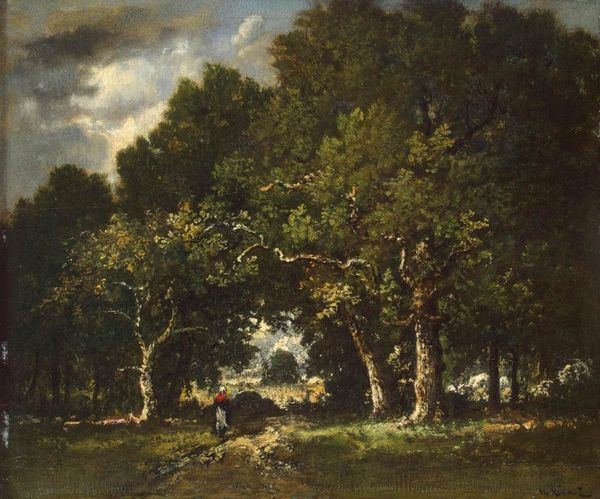
Copyright: Public domain
Editor: Alfred Parsons’ “When Nature Painted All Things Gay,” dating back to 1887, is truly lovely! I am taken with the landscape. What are your initial thoughts? Curator: When I see Parsons’s pastoral scene, I consider the conditions of its making, specifically, the labor involved in producing both the materials of the painting, and the subject of the painting itself. Parsons’ landscapes often glossed over the realities of rural labor. Look at those sheep; do you see any sign of a shepherd actively managing the flock? Editor: Not really. I mostly just see sheep grazing peacefully, a bucolic scene! Curator: Precisely. Consider the historical context. The late 19th century witnessed significant changes in agricultural labor practices. Think about how paintings like this may have reinforced a romanticized image of the countryside that masked economic and social struggles for rural workers. Does that influence your reading? Editor: It does, because I hadn’t considered what was left out, like, who is even taking care of those sheep? Curator: What about the materials? Parsons likely used commercially produced oil paints, which meant access to a broader range of colors. And think about the labor involved in extracting pigments and processing them into paint. That history becomes embedded within the landscape. Editor: So, the availability of materials shapes the art, and who even has time to produce art versus working class. Curator: Indeed! It pushes us to consider who is served and left unacknowledged. It makes me question this apparently idyllic world, to think about how it’s constructed, and what perspectives it silences. Editor: That gives me a completely new way to consider landscapes, thinking about the means of production that allow their creation!
Comments
No comments
Be the first to comment and join the conversation on the ultimate creative platform.
